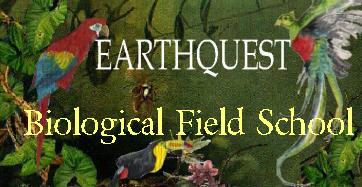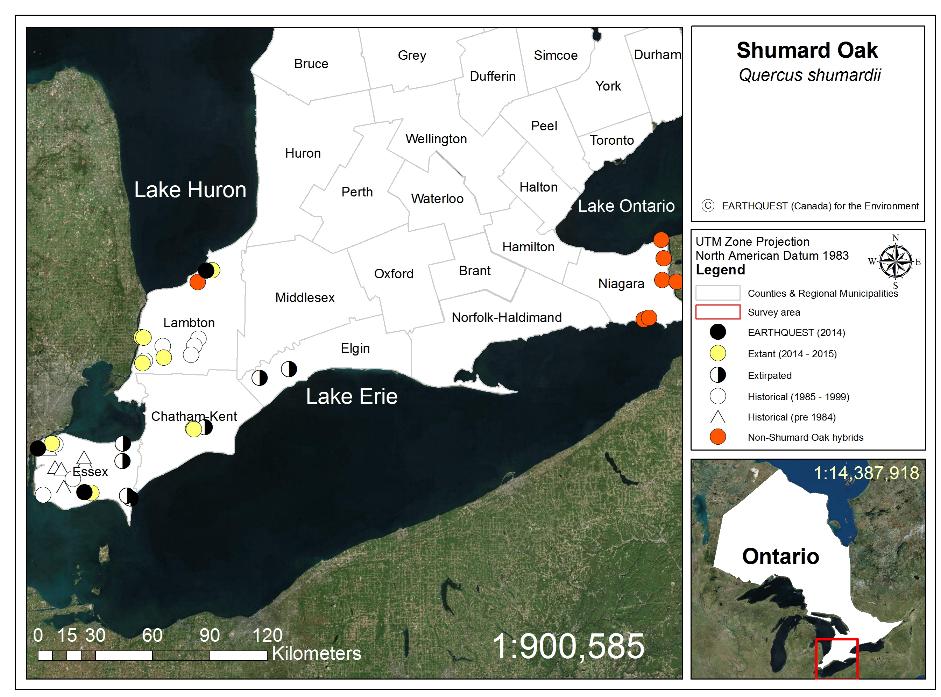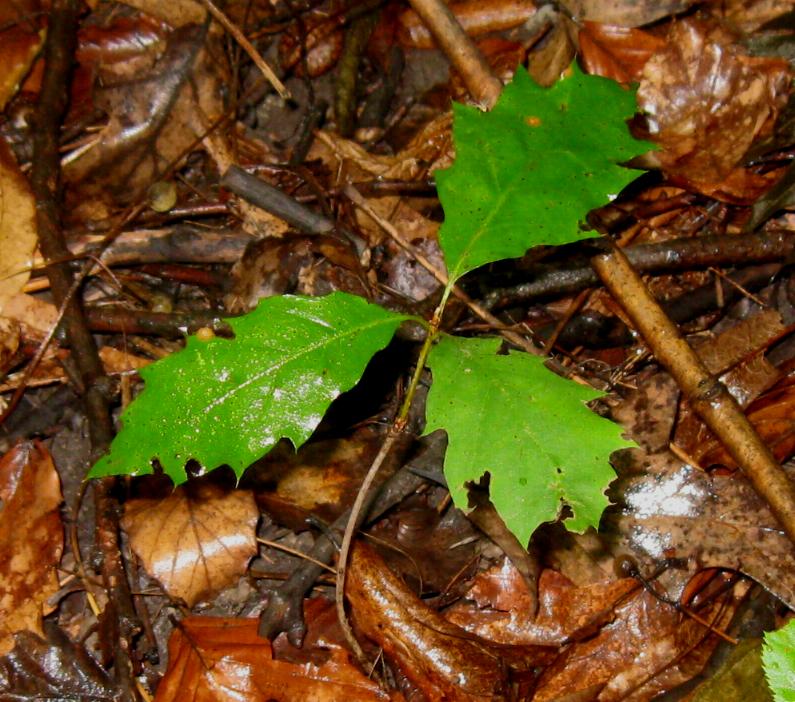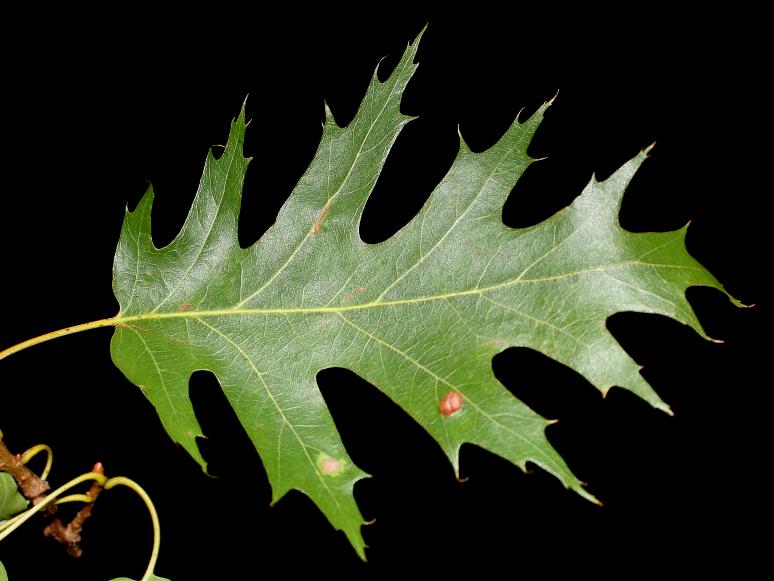
Spring | ||||||||||||||||||
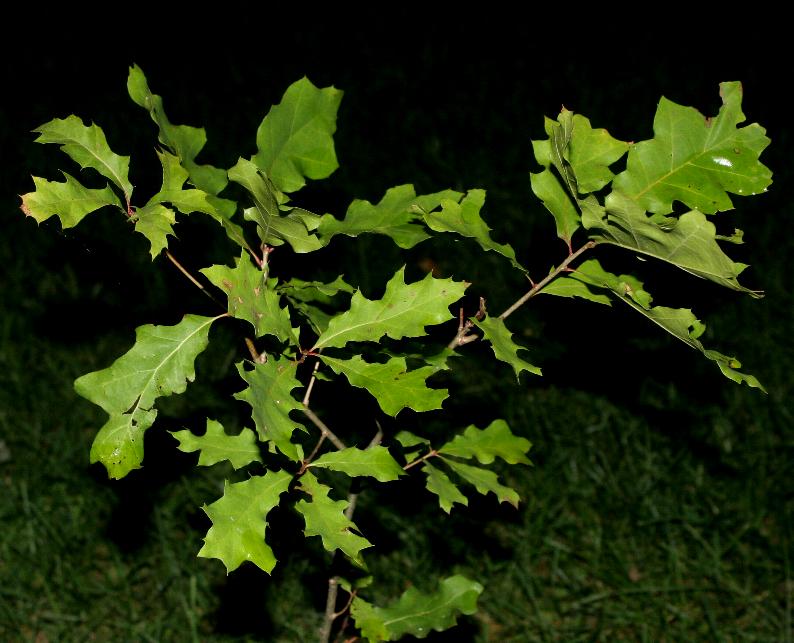 |
||||||||||||||||||
Summer | ||||||||||||||||||
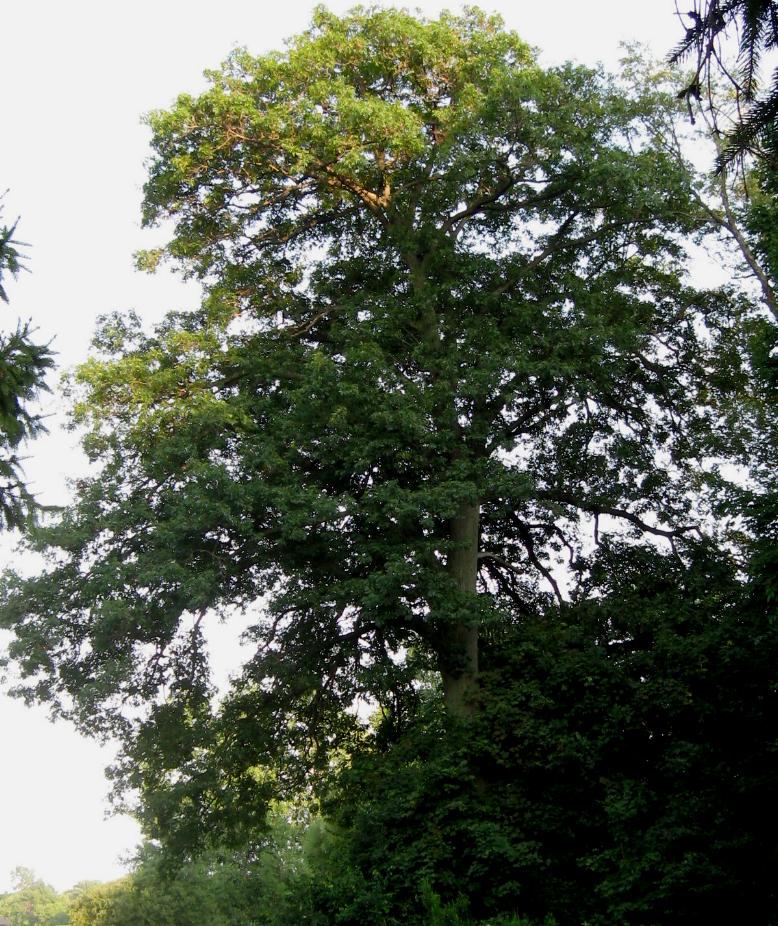 |
Leaves
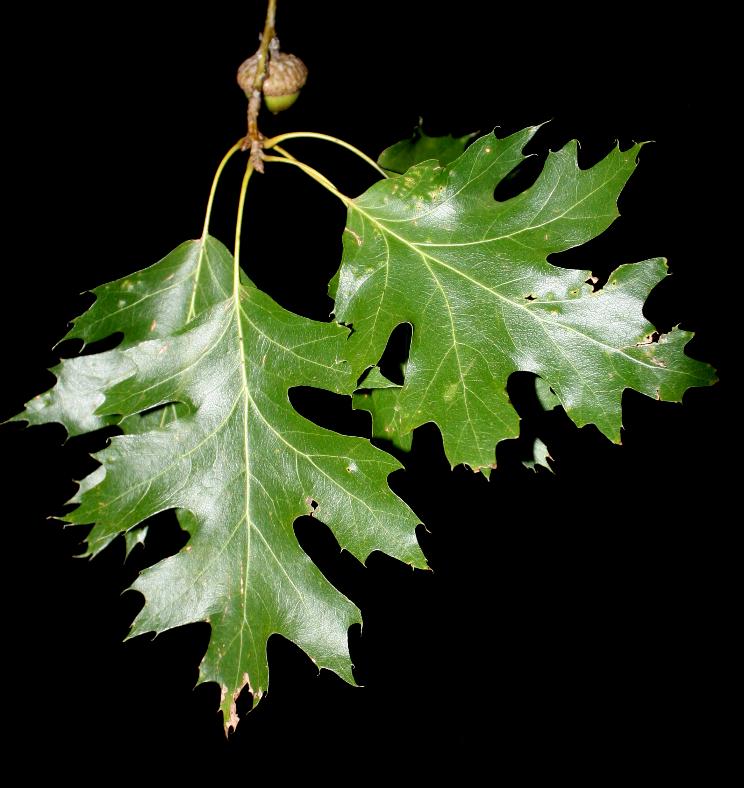 Photo: Dave Jolly | Tomentum
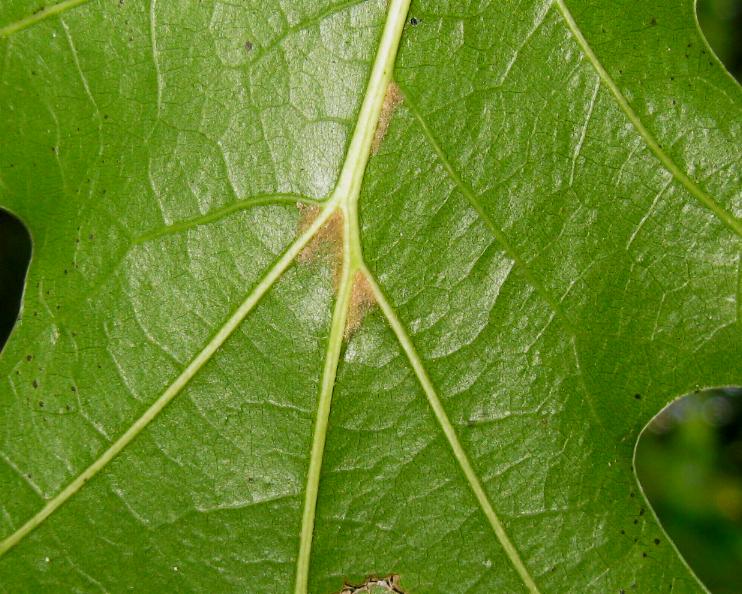 Photo: Dave Jolly | Flower (male/pollen)
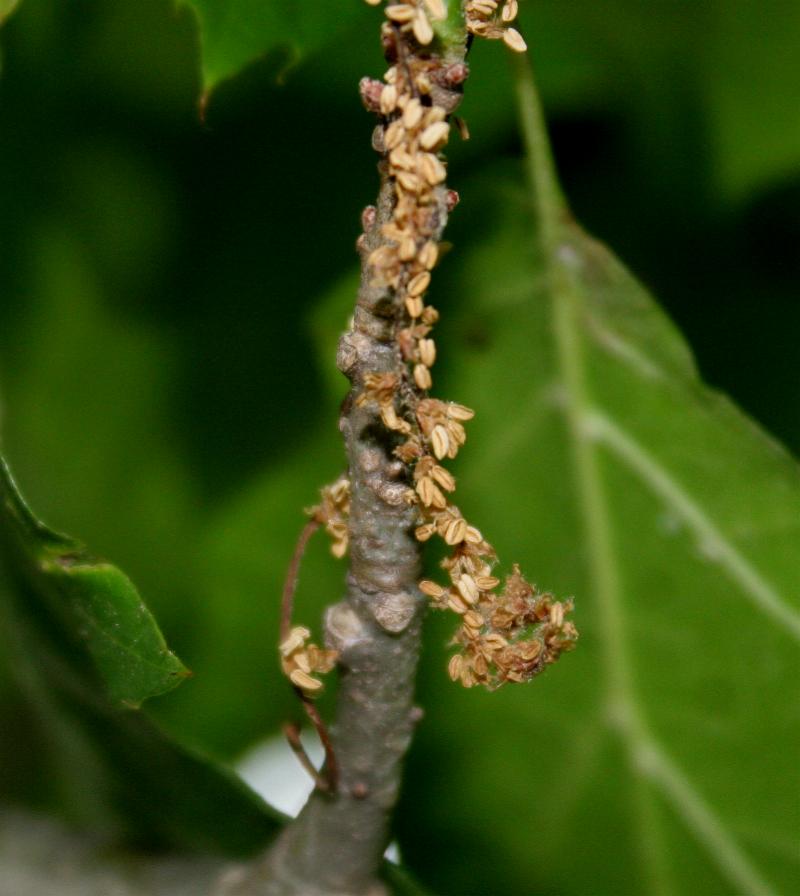 Photo: Dave Jolly |
|||||||||||||||
Fall | Acorn
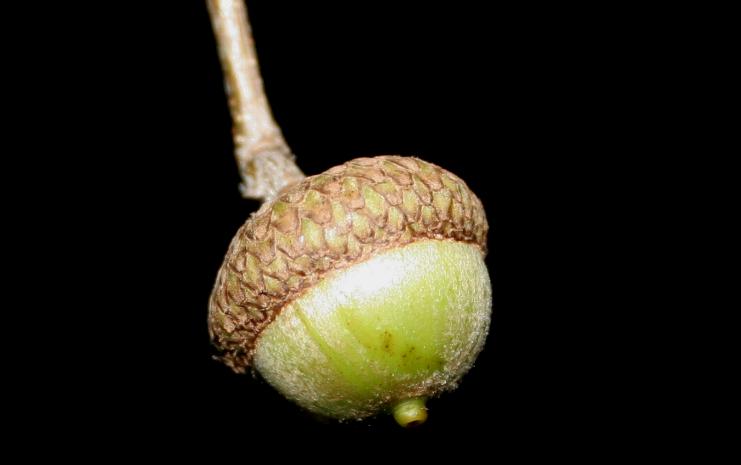 Winter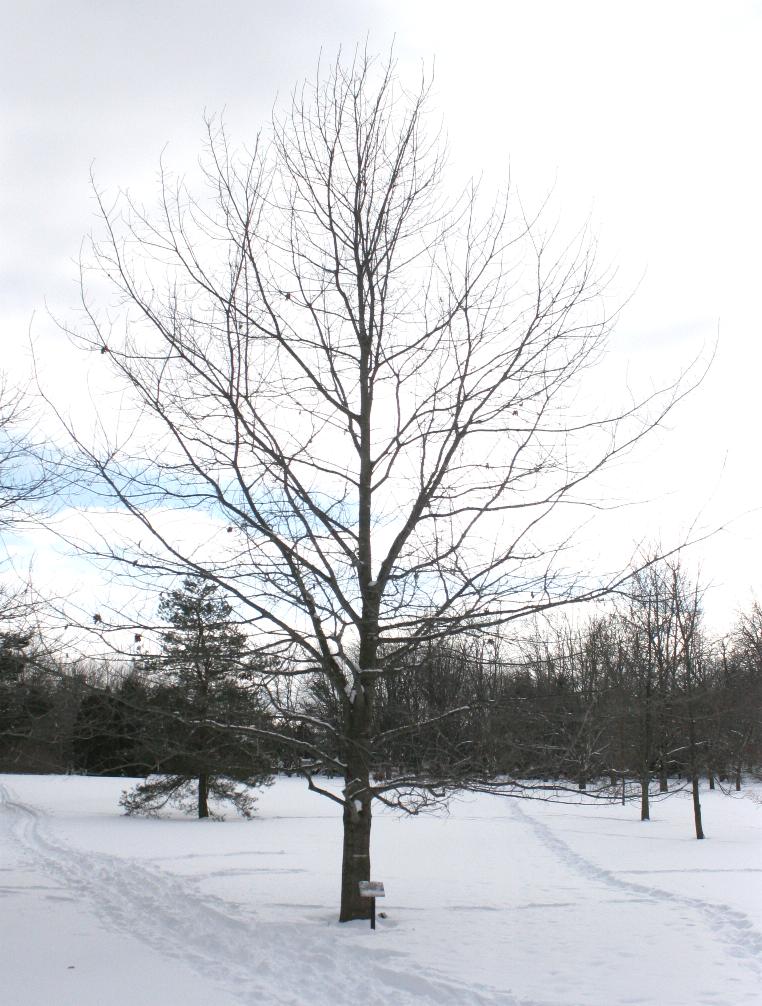 Bark
| 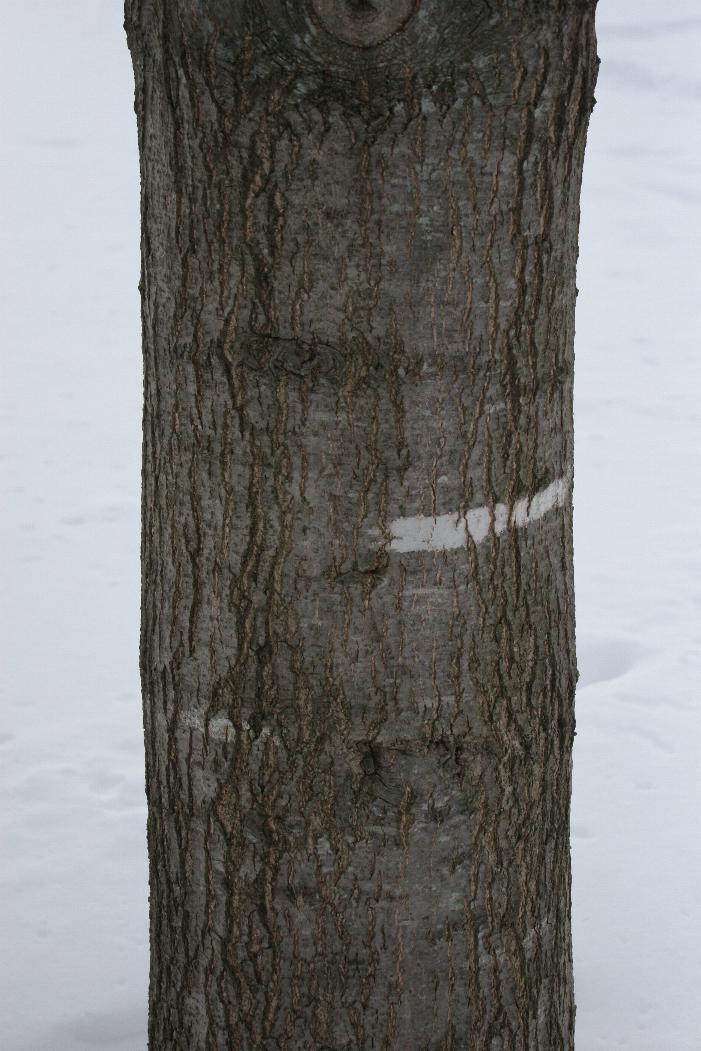 Photo: Dave Jolly Buds
| 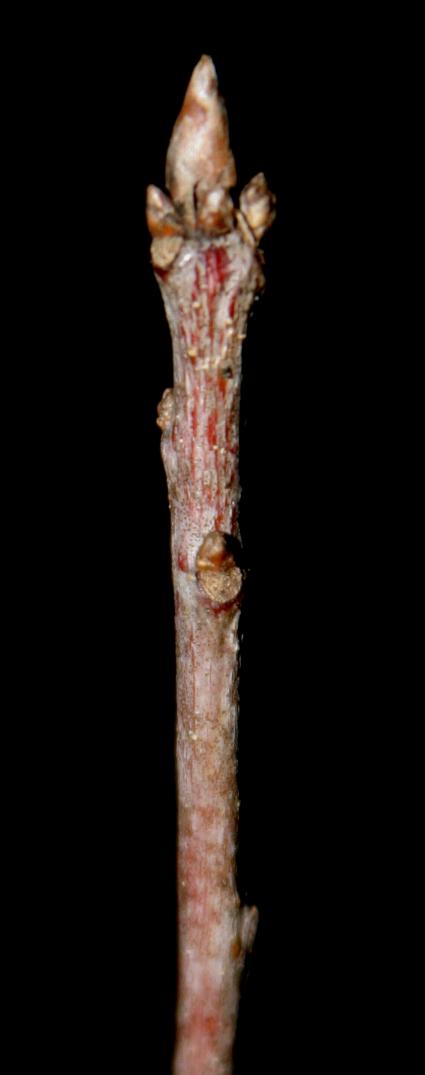 Photo: Dave Jolly Leaf scar
|
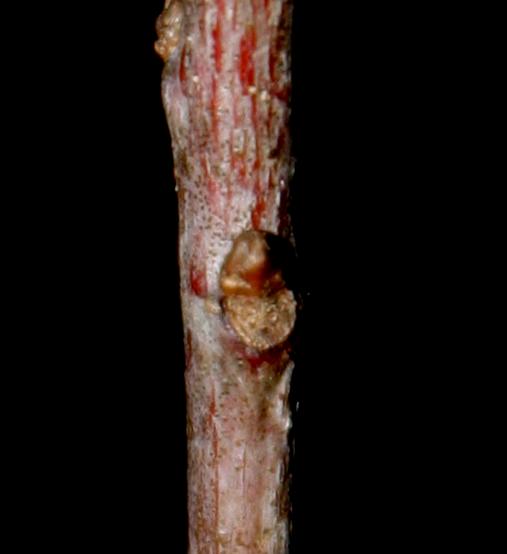 Photo: Dave Jolly
Flowering period: A relatively small window of time; May 28 to June 6. The source of this data is the EARTHQUEST Plants of Ontario database (2015b).
5 Second Rule Identification: Alternate leaved, pinnate veined, deep sinuses; 4 - 11 lobes, which may appear square or rectangular 3 - 4 bristles per lobe, butressed trunk.
Biology and Ecology: Little specific information has been compiled on the biology of this species. Similar to other oaks, this species requires full sunlight for seedling establishment. In the Canadian population, however, little regeneration by seedlings was documented during 2014 surveys. Shumard Oak also regenerates through its ability to sprout from stumps (Jolly and McKinley 2015). For a detailed description of Shumard Oak biology and ecology see the Ontario Management Plan (Donley et al. 2014).
Population Size: The exact population size of this tree in Canada remains unclear. Dave Jolly estimates that the upper limit of trees is approximately 500 trees in Essex county (Waldron pers. comm. 2014), 200 trees in Lambton county and 30 trees in Chatham-Kent (Jolly 2015a, Jolly pers. obs. 2014). However, the real number of mature reproducing trees was estimated to be between 641 and 655 (Jolly and McKinley 2015).
Habitat & Soils: Rich deciduous woods and wooded floodplains. Soils are generally mildly acidic with a pH of 5.5 to 6.5 in deciduous forest (upland forest and wet-mesic forest) and woodland understories with approximately 40 to 80% shade (Jolly and McKinley 2015). Ecological Land Classification data is lacking for most counties, but available for the following vegetation types in Essex county; Shumard Oak Mineral Deciduous Swamp Type (SWDM1-4), Silver Maple Mineral Deciduous Swamp Type (SWDM3-2), Fresh-Moist White Elm Lowland Deciduous Forest (FOD7-1), Fresh-Moist Bitternut Hickory Deciduous Forest Type (FOD9-5), Fresh-Moist Shagbark Hickory Deciduous Forest Type (FOD9-4), Fresh-Moist Green Ash Hardwood Lowland Deciduous Forest Type (FOD7-2), Dry-Fresh Sugar Maple Deciduous Forest Type (FOD5-1), and Bur Oak Mineral Deciduous Swamp Type (SWD1-2).
Threats: Shumard Oak populations in Ontario are largely threatened by housing and urban areas, annual and perennial non-timber crops, renewable energy, logging and wood harvesting (Jolly and McKinley 2015).
Recovery: Currently, no recovery strategies have been recommended outside the Ontario Management Plan compiled by staff of Carolinian Canada Coalition in 2013. Please refer to "Management Plan for the Shumard Oak (Quercus shumardii) in Ontario". A national recovery team has not been designated.
Biometrics: May grow to 35 m in height. Leaves are Lobed and parted 14 - 22 cm in length on average. Acorn: robust; cup thicker than Quercus rubra comprising up to 1/4 of nut; Scaled. Size: 17 - 20 mm in width. For a detailed account of leaf and acorn morphology see Jolly and McKinley (2015).
Environmental Protection: This species is protected as a Schedule 3 tree under the federal Species at Risk Act. Shumard Oak received designation as Special concern and protection by COSEWIC in 1984 and was reassessed in 1999.
Confusing look-a-likes: This species readily hybrids when found growing with other Red Oak group species. It is generally distinguisable by possessing smaller acorns (i.e., less than 13 mm in length on average) and terminal buds that are more red in colour. However, genetic testing on potential hybrids has yet to be conducted and would shed valuable light on which populations are true Shumard Oak.
Plant associates: The following ground layer plants may be found growing in proximity to Shumard Oak; Dame's Rocket (Hesperis matronalis), Canada Avens (Geum canadense), Annual Fleabane (Erigeron annuus), Wild Strawberry (Fragaria virginiana, Red Oak (Quercus rubra), Running Strawberry-bush (Euonymus obovatus), Canada Goldenrod (Solidago canadensis), and Downy Yellow Violet (Viola pubescens).
References:
Distribution: To date, current, historical and extirpated populations have been found in 3 counties, or tier regional municipalities; Chatham-Kent, Essex and Lambton. The Niagara region populations reported previously (COSEWIC 1999) are suspected hybrids - possibly between Red Oak (Quercus rubra), Northern Pin Oak (Quercus ellipsoidalis) and Swamp Pin Oak (Quercus palustris). Dave Jolly observed Quercus rubra x palustris non-Shumard Oak hybrids growing together at several sites in Niagara region (Jolly and McKinley 2015).
Non-Shumard Oak hybrid (Quercus rubra x palustris)
$150 CAD + shipping and handling Photo: Dave Jolly for more information please click on; Ontario SAR & Rare Plants book
Senior Instructor/Ecologist/Consultant & President D. Jolly, B.Sc.
| ||||||||||||||
 EARTHQUEST (Canada) for the Environment
EARTHQUEST (Canada) for the Environment
